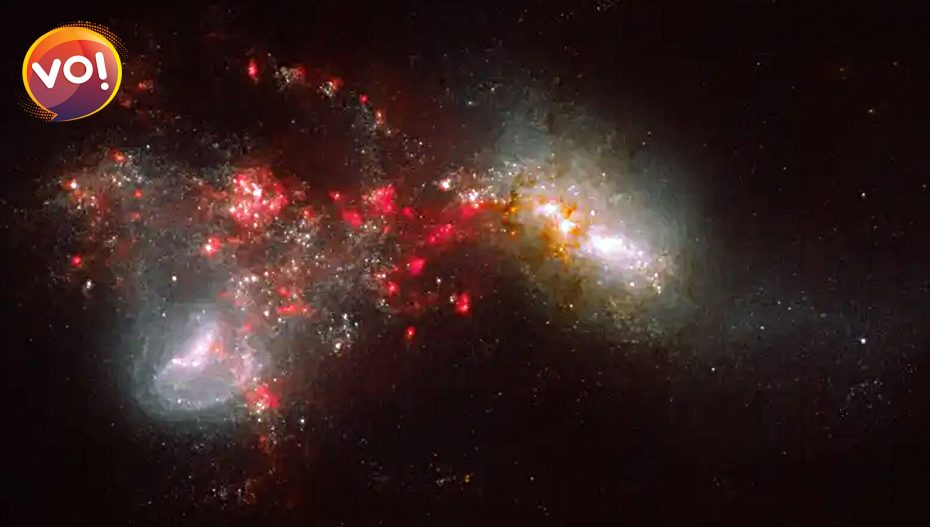Two glittering galaxies 275 million light-years away smashed together and spur an amazing star formation. The James Webb Space Telescope has managed to capture this dazzling image, much to the bewilderment of the netizens. However, this is not just a visual marvel, it has actually given the scientists something to think about.
The James Webb Space Telescope (JWST) has caught two galaxies colliding. In the midst of this cosmic clash, researchers have found something unexpected – there doesn’t seem to be an active supermassive black hole in either galaxy.
The pair of galaxies, called IC 1623 or VV 114, is about 275 million light-years away in the direction of the constellation Cetus. Lee Armus at the California Institute of Technology and his colleagues observed them with JWST as part of a campaign to spot four relatively nearby, bright galaxy mergers and figure out how they work.
“A merger brings dramatic changes to the galaxy’s shape and content and pretty much everything, so we really have to understand this process to figure out how galaxies evolve,” says Vivian U at the University of California, Irvine, part of the team conducting this research.
As two galaxies orbit one another and collide, they rip huge streams of material off one another and create massive shock waves that pass through both galaxies. Both of these processes are highlighted in the red splotches in this image, which are star-forming regions shrouded in dust. They were most likely spurred into activity by the shock waves.
Nearly every massive galaxy has a supermassive black hole at its centre, and researchers expect the black holes in merging galaxies to be relatively active, devouring gas from their surroundings and emitting huge amounts of radiation in the process. But when U and her colleagues began analysing the data from IC 1623, they found no sign of active black holes.
“These mergers typically rile things up and cause these black holes to get a lot of gas and then they’re excited and things get interesting, but we don’t see that here,” says Armus. “It may be that we have to look a little harder – they don’t always stand up and wave.” A supermassive black hole or two may simply be unexpectedly inactive or hidden deep within the colliding galaxies.
Also Read : https://www.vibesofindia.com/james-webb-space-telescope-captures-stunning-image-of-jupiter/













